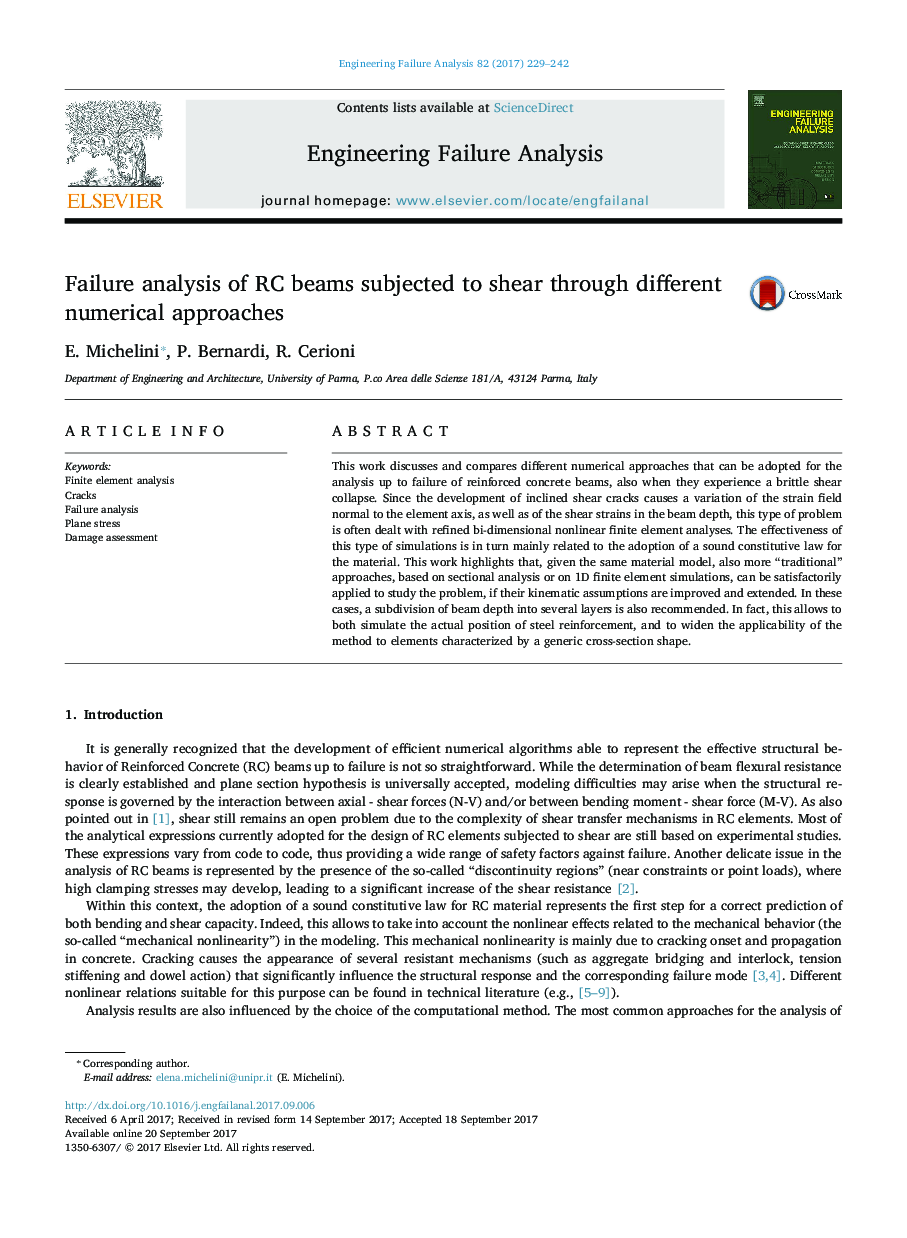| Article ID | Journal | Published Year | Pages | File Type |
|---|---|---|---|---|
| 5013481 | Engineering Failure Analysis | 2017 | 14 Pages |
Abstract
This work discusses and compares different numerical approaches that can be adopted for the analysis up to failure of reinforced concrete beams, also when they experience a brittle shear collapse. Since the development of inclined shear cracks causes a variation of the strain field normal to the element axis, as well as of the shear strains in the beam depth, this type of problem is often dealt with refined bi-dimensional nonlinear finite element analyses. The effectiveness of this type of simulations is in turn mainly related to the adoption of a sound constitutive law for the material. This work highlights that, given the same material model, also more “traditional” approaches, based on sectional analysis or on 1D finite element simulations, can be satisfactorily applied to study the problem, if their kinematic assumptions are improved and extended. In these cases, a subdivision of beam depth into several layers is also recommended. In fact, this allows to both simulate the actual position of steel reinforcement, and to widen the applicability of the method to elements characterized by a generic cross-section shape.
Related Topics
Physical Sciences and Engineering
Engineering
Industrial and Manufacturing Engineering
Authors
E. Michelini, P. Bernardi, R. Cerioni,
